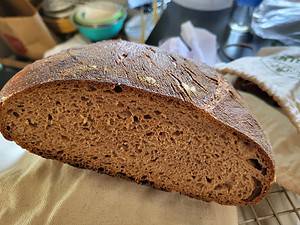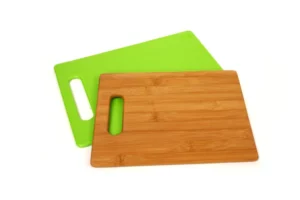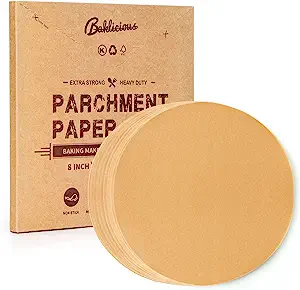By the end of June 2023, I managed to follow recipes several times to bake two boules of 75% whole wheat sourdough bread each time. Overall, the baking experiment went well − in my opinion. Each of the boules turned out tasty, tangy, delicious, and all. No embarrassment here, just beginner’s luck.
However, none of the early baking trials went perfectly well. There was always something that did not go according to plan. That is, there are just a lot of factors in the baking process that can and will, at one time or another, go a bit wrong.
First Trial

The first try went well enough to be encouraging, but probably just beginner’s luck. The two boules did not spring (rise) as anticipated, but whole wheat sourdough does not spring as much as white flour sourdough anyway. My boules did look a bit more like frisbees.
Second Trial
The second try rendered one good boule, as good as any one of the first try. However, the second boule came in underbaked. Here’s what happened.
I still was working with only one Dutch oven, so I had to bake one boule after the other in the kitchen oven. As I baked early in the morning, still a bit sleepy, I mindlessly turned off the kitchen oven during the second run − just before taking off the lid with the second boule in the Dutch oven. Dang! I immediately turned the kitchen dial back higher. But for some mysterious reason, the kitchen oven did not seem to respond and I did not notice. The second boule baked for the last 20 minutes at a diminutive temperature of around 340° F. The bread was eatable, but it had no real crust to talk about.
Third Trial
The third try is a charm, they say. However, the two boules did not spring (rise) as high as hoped, but family and friends were mightily impressed. Wonder if my expectations are just wrong.
Fourth Trial
The fourth try ran into 3 small issues.
Issue #1
I needed to transfer 360g of levain into the dough to start the bulk fermentation. That is each time a bit of a tricky process as my levain is rather wet and sticky. I placed the 12-quart tub containing the autolyse of 800g of flour and 660g of water as well as 21g of salt and 1.75g of yeast onto my kitchen scale. The empty tub weighs about 400g. The total weight was, I thought, well below the scale’s capacity of 5 lbs or 2.25kg.

However, when I held the 6-quart levain tub upside down over the 12-quart dough tub so as to let 360g of levain drop from the smaller tub down into the larger tub sitting on the scale, the scale shut down with an error code indicative of having exceeded the sale’s capacity. Bummer.
By then, I probably let already too much levain drop onto the other ingredients for mixing. I stretched and folded the dough in the tub three times during the first 2 hours of bulk fermentation as required by the recipe. Eventually, however, the entire mix more than tripled in volume within 4 hours during bulk fermentation on that 85° F warm day.
Worried, I released the still rather wet and bubbly-active dough from the tub onto my cutting board and continued to stretch and fold the dough trying to build some gluten strength. That did not go too well, either.
Issue #2
I do not sport a large baker’s table. And my cutting board was a bit small at 17′ by 14′ and slid on the lacquered kitchen table in accordance with the direction of me trying to stretch and fold the dough with both hands. I had used the same cutting board for the previous 3 attempts but had then placed it on the less-slippery, just-as-too-small granite kitchen counter instead.

Needless to say, all that slip and slide of the cutting board made stretching and folding the wet dough challenging. My hands were full of dough, and other things on the table were nearly pushed off altogether. I divided the dough into two equal pieces and continued to stretch and fold each piece separately. Eventually, my patience ran out and I gave up on folding the dough enough for it to hold its shape as a ball. It seemed that the dough was too wet from an oversized amount of added wet levain.
I threw the two pieces each into one of my two bannetons, covered each with a plastic bag, and placed them into the refrigerator for proofing overnight.
Since then, I upgraded my board to a 24′ by 18′ size and look forward to trying again.
Issue #3
The next morning, I preheated the kitchen oven with the two Dutch ovens in it to 475° F, or so I thought. I did not look at the external oven thermometer at all as the oven is about 25° F hotter than the dial indicates. Turns out, I baked the two boules at about 495° F for 30 minutes covered, and another 20 minutes uncovered. In any case, the bottoms of the two boules seemed to have gotten just a tad too hot and developed a very slightly burnt crust here and there.
I do not mind eating slightly burnt food as I have devoured extremely well-done hamburgers over the years and lived for another day. But Christine noticed the dark crust underneath right away. She does not have my Neanderthal ancestors, I guess. Obviously, the boules now would not make it onto a sales shelf at a public market. But family and friends told me they were more than good enough.
Fifth Trial
I failed again − badly. This time around the kitchen oven got the better of me. It is an old oven without much of a clear see-through window. But the issue with this oven is that it seems not very responsive to its temperature dial. To get the oven to heat up to 475° F while pre-heating it with the two Dutch ovens in it, I seemingly need to only turn the dial to around 425° to 450° F. To make it worse, the dial seems to be a bit sticky as well. I had issues with the oven already during my 2nd trial.

During this trial, as well as during most of the prior trials, I used an external oven thermometer as a control sitting on the middle shelf in the oven. After the preheating, the thermometer indicated some 485° and I turned the oven’s dial down a bit. Whoa, the thermometer went down to 430° really fast, as if the oven had turned off altogether. It did as I could not hear the slight sound from the flow of gas into the burn elements any longer.
But turning the dial higher again did not seem to turn the oven back on. The heat stayed flat and declined ever so slightly. Apparently, I have to turn the dial to the very high ‘Broil’ setting and then back to between 425° and 450° F to turn on the oven and get to 475° F. Confused, I ended up fiddling around a bit more with the dial, with the heat running temporarily as high as 530° F! Ouch…
After some 25 minutes of fiddling, I took off the two lids to bake for another 15 to 20 minutes to develop the crust on top of the bread. With all my fiddling, and I have no better word for it, I just could not get the heat to stay consistent at 475° F.
When all was done, and after finishing the baking and taking the Dutch ovens out, the boules would not release upon turning them upside down over the cooling rack. Bummer.
The crust on top of the boules looked good enough, but the bottoms got burnt badly and stuck solidly to the Dutch ovens. I had not used a sheet of parchment paper as a safety layer in the Dutch ovens this try and now paid the price.
Well, I ended up pouring a good amount of olive oil around between the boules and the walls of the Dutch ovens and let the mess sit to soak. Eventually, I was able to pry off the boules with a long and thin metal spatula, the kind used to turn fish fillets.
Sixth Trial − July 7-8, 2023
Messed up a bit again, kinda. Two issues.
Issue #1
While stretching and folding the two pieces of dough after bulk fermentation, I did not stretch and fold one of the loaves well enough. For some odd reason, I did not have the magic touch for this one loaf and it came out a bit flat after baking. The other loaf was fine as it had risen enough not to be mistaken for a frisbee. I need to keep practicing my stretches and folds.
Issue #2
Well, both loaves stuck to the Dutch ovens a bit again, that is, the bottoms had gotten too hot and burned a little. The oven was at a constant 475° F during baking, I did not mess with the dial this time. But, I had placed some parchment paper into the Dutch ovens during the kitchen oven’s preheat, which − I learned since − was a bad idea. Parchment paper, it says, is good for temps up to 450° F. It should not be used at that or a higher temperature without food on it.

The parchment paper got smoked, so I took it out just before placing the proofed loaves into the Dutch ovens. And *BAM,* I had slight problems getting the loaves out after baking. A thin metal spatula was needed again to pry the bread from the cast iron.
Found some 8-inch parchment paper rounds on Amazon. These should fit my 4-quart Dutch ovens and give me no excuse to not use parchment paper anymore.
I may also insert a regular baking pan onto the lower rack of the kitchen oven to shield the Dutch ovens from too much heat radiating from the lower heating elements.
Seventh Trial − July 10-11, 2023
The two boules were good but did not spring (rise) as much as anticipated. I inserted a regular baking pan onto the lowest rack of the kitchen oven to mitigate the direct heat of the kitchen oven’s heating coils on the Dutch ovens, did not touch the oven’s dial during baking, used parchment paper, and reduced the baking time by 5 minutes. I probably overstretched or overfolded the dough a bit.
Baking whole wheat sourdough bread is more of an art and less of a science! Friends and family called it a success again and took one boule as a contribution to a potluck meeting. But I want to bake boules and not frisbees.
x Trials – late July and onwards, 2023
I think that I worked out most of the kinks by now. Bread loaves come out good enough.